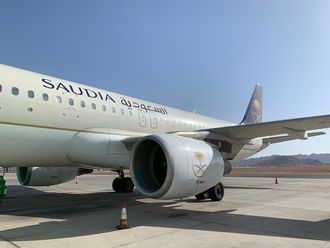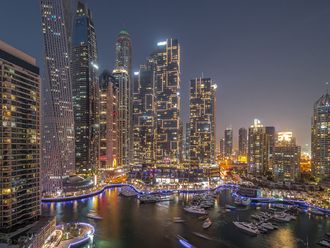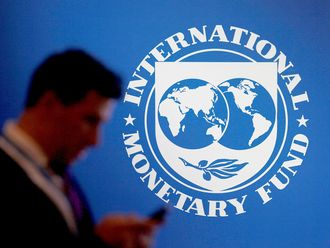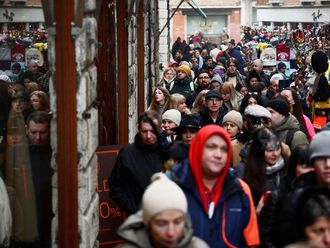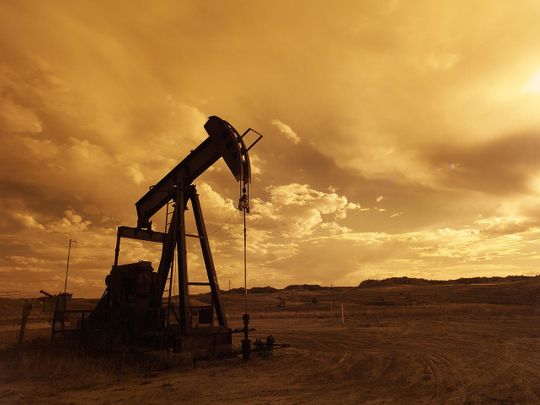
By Liam Denning
Riyadh: We’re about to find out just how laid back the oil market really is. It has shrugged off sanctions on Iran, exploding tankers and drones getting shot down over the Strait of Hormuz.
But this weekend’s strike against Saudi Arabia’s Abqaiq processing facility — perhaps the single most important piece of oil infrastructure on the planet — is of a different order. Saudi Arabia said the attack affected 5.7 million barrels a day of output, or roughly half their production.
The more important issue is how long any disruption lasts. It is unclear whether the strike involved drone-fired weapons or missiles or a combination of them. The Abqaiq facility’s sheer size, covering more than a square mile, makes it hard to imagine that anything but an overwhelming or extraordinarily sophisticated attack could keep it offline for long.
But we just don’t know at present. That alone should add some risk premium to oil prices.
Intrigue finds a way back
The prevailing mood in the markets before Saturday was one of uncertainty weighing on prices, largely related to the swings of the trade war and — with the sudden absence of John Bolton from President Donald Trump’s ear — whether sanctioned Iranian barrels would find their way back to the market. Now we have some old-style geopolitical intrigue pushing the other way.
Even this uncertainty is nuanced, though. On one hand, it was tough to imagine a big breakthrough in US-Iranian relations even before this weekend, Bolton’s departure notwithstanding. Now, with Iranian-sponsored Al Houthi fighters in Yemen claiming responsibility for a strike at the heart of the Saudi Arabian economy — and US Secretary of State Michael Pompeo directly blaming Iran for the attack — a meaningful thaw that allows Iranian barrels to replace disrupted Saudi ones seems inconceivable.
Asian buyers face a dilemma
On the other hand, if Saudi Arabia’s output is disrupted for a significant amount of time — meaning weeks at least — Asian buyers seeking heavier grades of crude to feed their refineries will have a reason to try to take more Iranian barrels regardless. We also don’t know yet what will happen in terms of strategic stocks being released to offset disrupted Saudi Arabian exports.
The International Energy Agency says it is monitoring the situation, but also notes that markets are currently “well supplied”, suggesting it expects Saudi Arabia to repair things quickly.
What is clear is that the oil market has entered a new and dangerous period. Crown Prince Mohammad Bin Salman will almost certainly have to respond, especially if the attack really has knocked out a lot of oil supply for an extended period.
Indeed, this escalation could be interpreted as Iran’s response to Washington’s “maximum pressure” campaign — if Tehran can’t export, then neither should Saudi, may be the zero-sum thinking at play here. The chance of miscalculation and further escalation is very high.
Windfall opportunity
As much as oil markets usually like nothing more than a bit of strife in this corner of the world, it is ultimately pernicious to the industry’s longer-term fortunes. In the short-term, a risk premium combined with absent Saudi barrels would present a windfall opportunity for other producers (including struggling US shale operators).
But with growth in consumption flagging already, a geopolitical tax risks piling on pressure even further. Price spikes driven by random violence aren’t a substitute for demand-driven strength.
Moreover, we are less than five months away from the Iowa caucuses ahead of a presidential election that will be defined in large part by whether and how far the US skirts a possible recession. Trump’s sensitivity to pump prices was established during 2018’s midterms, so a conflict-driven spike in the coming weeks and months could mean a flock of black swans for the oil market, ranging from releases of strategic reserves to outright bans on oil exports.
Climate change
There is a more existential issue to consider, too. One of the big themes being debated among Democrats ahead of Iowa is climate change. Yet, while polling suggests the issue resonates with an increasing proportion of Americans, history suggests it is pretty tough to get them to focus on energy issues unless, as in 2008, prices are high.
That could end up being the case in 2020, if it plays out against a backdrop of Middle Eastern conflict, high pump prices and consequent damage to economic growth.
Moreover, Abqaiq’s singular importance carries special resonance in the US. For some, it bolsters the drill-baby-drill line of reasoning, even if that fails to recognise America’s interdependence in global energy markets.
On the other hand, we have just been reminded of the fragility inherent in an energy system built on centralised supply and extended supply chains. For proponents of energy (and climate) security via electrification and energy efficiency, few things would bolster their arguments better than the spectacle of an oil market thrown into chaos by some drones taking shots at a single facility most people have never heard of.






